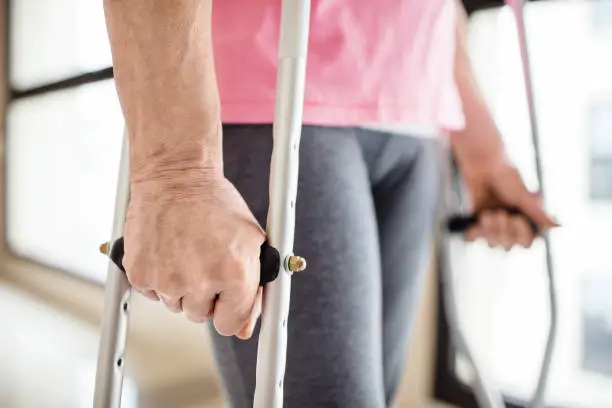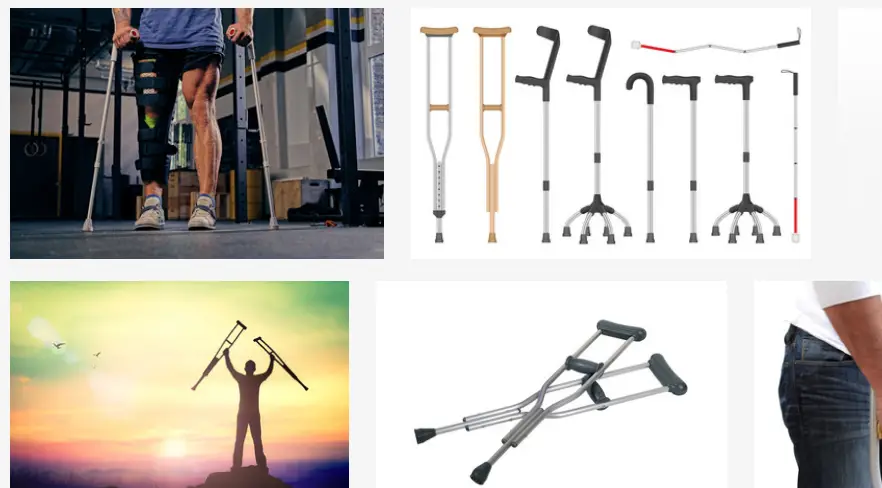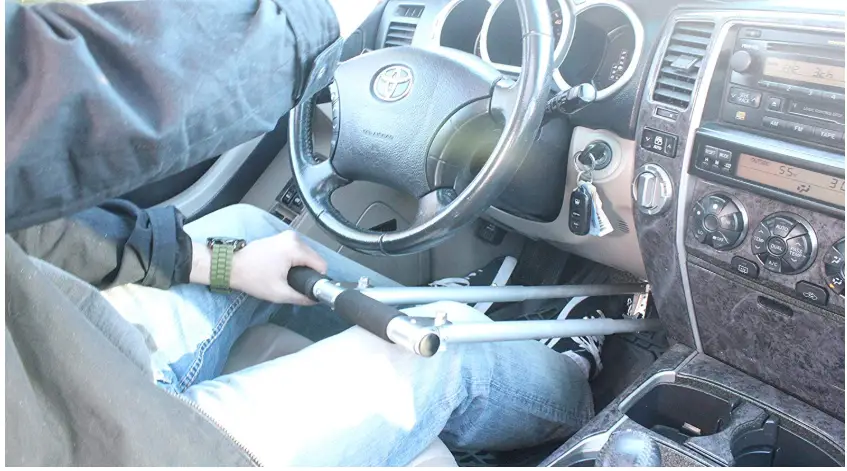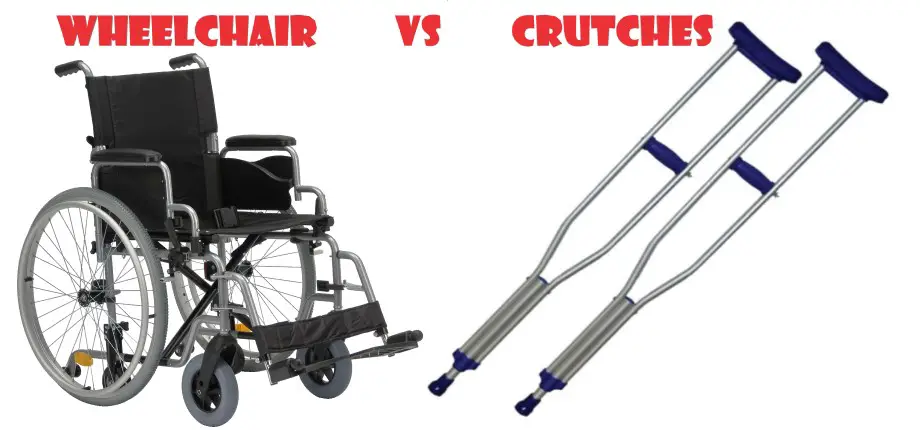Crutches are mobility aids that help to transfer weight from the user’s legs to the upper body.
They are often used by people whose legs cannot support their weight due to temporary injuries or permanent disabilities.
Doctors and occupational therapists know the type of crutches to recommend and, in fact, only recommend crutches if you have good balance, strength, and endurance.
Slipping with your crutches is a very possible incident that can occur in the least expected situations. You need to put some cautionary measures in place to avoid making your crutches slip, injuring you in the process, and causing further complications to your situation.
Although most crutches have a rubber base, they still have the potential to slip away from underneath your arms and this can result in nerve damage, pains, falls, and other complicated injuries.
Table of Contents
- Types of Crutches
- How to Make Crutches Slip Proof
Types of Crutches
To understand how to handle your crutches and the kind of base it has, you need to know the three different types of crutches.
The Underarm (aka Axilla/Axillary) Crutches
Here’s the most common type of crutch. It is composed of an axilla bar (the top/beginning of the crutches), the hand bar, and double frames joined almost at the end part by a single frame. The hand bar and overall crutch frame are adjustable in height.
Related: These are the Recommended Types of Crutches to Use
The Elbow or Forearm (aka Canadian or Lofstrand) Crutches
The components of this type of crutch are a single frame, forearm cuff, and handgrip. The height of the forearm crutch is from the handgrip to the floor and it is also adjustable in height. It looks like a walking stick with handcuffs.
The Gutter or Adjustable Arthritic (aka Forearm Support) Crutches
This isn’t as common as the others. It is comprised of a metal padded forearm support, a strap, and an adjustable handpiece with a rubber ferrule.
The gutter crutch looks like a walking stick with a small control tabletop. It is usually used for patients who are on partial weight-bearing like rheumatoid arthritis.
How to Make Crutches Slip Proof
Having recognized the category of crutches, find below the measures you can put in place to help prevent them from slipping.

1. Resize and Make Your Crutches Fit
The most appropriate way to prevent your crutches from slipping is to size/fit them accordingly. Generally, the correct crutch measurements should be 3-finger spacing between your armpit and the top of the crutch pad (for the underarm crutches). The height of the hand pad on the crutch should be at your wrist level.
The correct space between your feet and the base of the crutch should be about 6 inches apart. To adjust the height of your crutch, find the silver button and push the button in, to either lengthen or shorten it.
To adjust the height of the hand pad, unscrew the wing nut, remove the screw, and adjust the height to fit accordingly. Reattach the screw and wing nut.
Related: How to Walk with Your Crutches Without Getting Tired
2. Avoid Barriers
These barriers seem like hindrances but are actually aids. Try your possible best to avoid stairways, escalators, and ramps, especially if a building has a lift option. This is because they can easily make your crutches slip and cause you to fall down. Use the elevator instead.
However, if there are no other options but to use these barriers, then make sure to use the stairs over the ramps or the escalators (this can particularly confuse you). Follow these steps below to ensure a smooth climb up the stairs.
A. Climbing the Stairs That Has a Handrail Support
- Going Up
Move to the base of the stairs and hold both crutches with one hand. Use the other hand to hold the handrail. Push down on the crutch and handrail, take the step up with your uninjured leg while the injured leg is slightly folded up backward, and follow it closely by lifting the crutches. Continue till you get to the top of the staircase.
- Coming Down
To move down the stairs, hold both crutches with one hand and use the second hand to hold the handrail for support. Stretch your injured leg forward and place the crutch down foremost on the first step, then followed by your uninjured leg. Continue this way till you get to the base of the stairs.
Related: How to Use Crutches on Stairs Without Railing
B. Climbing the Stairs without a Handrail Support
- Going Up
Move to the base of the stairs. Push down on the crutches and take a step up with the uninjured leg while the injured leg is slightly folded up backward. Follow closely with the crutches and continue this way till you get up the stairs.
- Coming Down
To move down the stairs, stretch your injured leg forward. Place your crutches down on the step and follow with the good leg till you get to the base
3. Always Dry the Base of Your Crutches
If the base of your crutches gets wet, always dry it with a piece of cloth or towel before placing it down on a slippery surface because it can make you slip and hurt yourself. Drying the wet base of your crutches will prevent them from slipping.
4. Remove Items/Objects That Can Cause You to Slip

Objects on the floor like rugs, carpets, and cords can trip an individual with/without crutches. These items should be removed out of the way because there is a higher chance of slipping if they are in the way of the crutches. Removing them makes it easier to prevent slips and falls.
5. Get Slip Resistant Crutch Bases
Although the base of crutches is slip-resistant (mostly rubber bottoms), they’re not designed for icy, wet, or slippery grounds. You can always purchase foul-weather crutch bases, which are specially designed as slip resistance for slippery surfaces.
6. Get a Good Crutch Bottom
This is an extra tip that can help to prevent your crutches from slipping. Most times, the base of your crutches might have accidentally tripped off from beneath without you realizing it.
This leaves the bottom unprotected until the crutch is about to slip, especially on a tiled surface. It is always best to get a good base that will last you a long time. Some examples of good crutch bottoms are:
I. Rubber crutch tips, which are made from rubber and vary in shape
II. Spikes bases are especially good for the winter season because they have small spikes that give you a better grip on slippery surfaces. However, you have to be careful because they can damage the floor of your home. They’re typically best for the outdoors during winter.
III. All-Terrain Crutch Base is basically designed to provide a stable base on both wet and dry surfaces.
IV. Quad-Point Support Tips are common with canes. They have four points and provide greater stability for people with balance issues.




